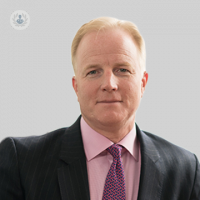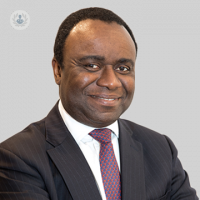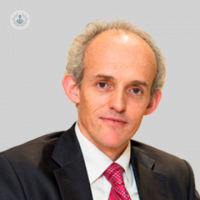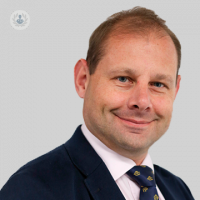What is a spinal fracture?
A spinal fracture is a break or collapse of one of the bones of the spinal column. It is a serious lesion. A fracture can occur in any part of the spinal column. Generally, spinal fractures are divided into three categories:
- Compression fractures: Occur when more pressure is put on a bone than it can withstand, causing it to break.
- Dislocation fractures: When the ligaments and/or the discs connecting vertebrae are stretched or torn, the bones may become misaligned.
- Fracture-dislocation fractures: Occur when bone and ligaments break. A spinal fracture may cause irreversible damage such as complete paralysis.

What are the symptoms of a spinal fracture?
Symptoms of a spinal fracture vary depending on the severity and location of the injury, although the primary symptom fluctuates from moderate to severe back pain that worsens with movement. Symptoms include:
- Back or neck pain
- Numbness
- Tingling
- Weakness
- Muscle spasms
- Bowel/bladder dysfunction
- Paralysis (Loss of movement in the arms or legs) - this may indicate a spinal cord injury.
What are the causes of a spinal fracture?
A spinal fracture may be caused by:
1. High-energy traumatic injury in the area, for example:
- A road traffic accident
- A fall
- A firearm injury.
2. Loss of bone mass, as caused by osteoporosis, for example. Other possible causes of bone mass loss are: cancer, chemotherapy, radiotherapy, hyperthyroidism and long-term use of corticosteroids. With lower bone mass, bone fractures may occur following normal activities, such as bending forward or picking up something.
How can a spinal fracture be prevented?
The best way to prevent a spinal fracture is to change your lifestyle and to take responsibility for your own back health. It is also important to bear in mind that the elderly are more susceptible to spinal column injuries, primarily because of falls.
How are spinal fractures treated?
The traditional (non-surgical) treatment of spinal fractures includes:
• Rest (for a short time as prolonged activity leads to more bone loss)
• Pain medication
• Calcium and vitamin D supplements
• Use of corsets or braces.
These treatments can reduce spinal fracture pain but do not stabilise the fracture or correct the vertebral deformity.
Most spinal fractures are treated with a brace for up to twelve weeks as this helps reduce pain.
In cases where a vertebral fracture does not improve over a number of weeks with medication and the use of brace immobilisation, surgery may be required.
The common minimally invasive surgical procedures for spinal fractures are:
Vertebroplasty: This procedure involves either no manipulation or external reduction of the fraction extension.
Kyphoplasty: A surgical device or instruments are placed into the broken vertebra and used to reduce the vertebral body collapse towards its original shape. The void created after removal of the instrument is filled with stabilising material, which, left in place, stabilises the fracture in the improved vertebral shape.
In rare instances, where the patient has significant loss of height, spine fusion surgery may be necessary.
Which specialists treats spine fractures?
There are various specialists that treat spine fractures. They include neurosurgeons, orthopaedic surgeons and spinal surgeons.
11-13-2012 05-25-2023Spine fracture
Mr Sean Molloy - Orthopaedic surgery
Created on: 11-13-2012
Updated on: 05-25-2023
Edited by: Karolyn Judge
What is a spinal fracture?
A spinal fracture is a break or collapse of one of the bones of the spinal column. It is a serious lesion. A fracture can occur in any part of the spinal column. Generally, spinal fractures are divided into three categories:
- Compression fractures: Occur when more pressure is put on a bone than it can withstand, causing it to break.
- Dislocation fractures: When the ligaments and/or the discs connecting vertebrae are stretched or torn, the bones may become misaligned.
- Fracture-dislocation fractures: Occur when bone and ligaments break. A spinal fracture may cause irreversible damage such as complete paralysis.

What are the symptoms of a spinal fracture?
Symptoms of a spinal fracture vary depending on the severity and location of the injury, although the primary symptom fluctuates from moderate to severe back pain that worsens with movement. Symptoms include:
- Back or neck pain
- Numbness
- Tingling
- Weakness
- Muscle spasms
- Bowel/bladder dysfunction
- Paralysis (Loss of movement in the arms or legs) - this may indicate a spinal cord injury.
What are the causes of a spinal fracture?
A spinal fracture may be caused by:
1. High-energy traumatic injury in the area, for example:
- A road traffic accident
- A fall
- A firearm injury.
2. Loss of bone mass, as caused by osteoporosis, for example. Other possible causes of bone mass loss are: cancer, chemotherapy, radiotherapy, hyperthyroidism and long-term use of corticosteroids. With lower bone mass, bone fractures may occur following normal activities, such as bending forward or picking up something.
How can a spinal fracture be prevented?
The best way to prevent a spinal fracture is to change your lifestyle and to take responsibility for your own back health. It is also important to bear in mind that the elderly are more susceptible to spinal column injuries, primarily because of falls.
How are spinal fractures treated?
The traditional (non-surgical) treatment of spinal fractures includes:
• Rest (for a short time as prolonged activity leads to more bone loss)
• Pain medication
• Calcium and vitamin D supplements
• Use of corsets or braces.
These treatments can reduce spinal fracture pain but do not stabilise the fracture or correct the vertebral deformity.
Most spinal fractures are treated with a brace for up to twelve weeks as this helps reduce pain.
In cases where a vertebral fracture does not improve over a number of weeks with medication and the use of brace immobilisation, surgery may be required.
The common minimally invasive surgical procedures for spinal fractures are:
Vertebroplasty: This procedure involves either no manipulation or external reduction of the fraction extension.
Kyphoplasty: A surgical device or instruments are placed into the broken vertebra and used to reduce the vertebral body collapse towards its original shape. The void created after removal of the instrument is filled with stabilising material, which, left in place, stabilises the fracture in the improved vertebral shape.
In rare instances, where the patient has significant loss of height, spine fusion surgery may be necessary.
Which specialists treats spine fractures?
There are various specialists that treat spine fractures. They include neurosurgeons, orthopaedic surgeons and spinal surgeons.
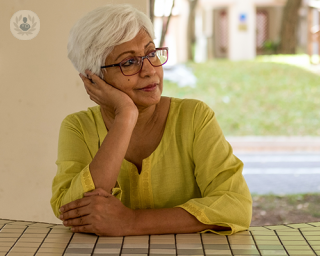

COVID-19 and osteoporosis: Continuing treatment from home and managing fracture pain
By Professor David Reid
2024-11-20
You can continue your osteoporosis treatment despite the closures of hospitals and clinics due to the coronavirus COVID-19 pandemic. This article clarifies how to continue your treatment – be it tablets, injections or infusions – and how to alleviate the pain of fractures, particularly spine fractures. See more
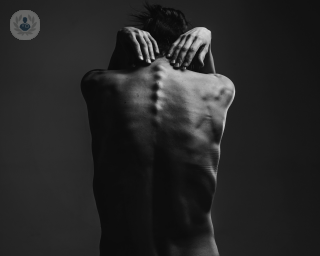

Spinal fracture: causes, prevention and treatments
By Mr Caspar Aylott
2024-11-20
There are many different types of spinal fractures ranging from insufficiency fractures to stress fractures, and they all cause back pain. Mr Caspar Aylott, gives us an overview of the various types of spine fractures, how they are caused and what treatments are available. See more
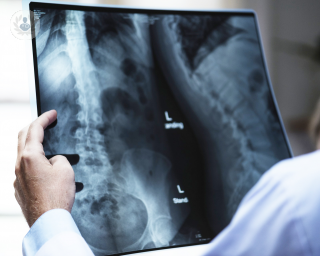

Fracture recovery: tips from an expert
By Mr Peter Peev
2024-11-20
A fracture is the most common injury seen by orthopaedic specialists and can affect any bone in the body. After impact from a great force, exceeding the energy a bone can absorb, a fracture is likely to occur. Mr Peter Peev, a consultant orthopaedic surgeon, describes the various types of bone fractures and offers our readers some tips on how to speed up the recovery process. See more
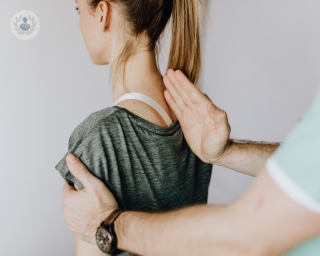

Why do I have a rounded back? The best treatment for bad posture
By Mr Caspar Aylott
2024-11-20
Have you ever been told to 'stand up straight' or 'stop slouching'? If you have, you could be suffering from kyphosis, a condition in which the upper part of your spine curves excessively and causes your back to look more rounded than normal. Mr Caspar Aylott, a leading consultant spinal surgeon explains more. See more
Experts in Spine fracture
-
Mr Sean Molloy
Orthopaedic surgeryExpert in:
- Minimally invasive spinal surgery
- Scoliosis
- Spine fracture
- Robotic surgery
- Spinal surgery
- Spinal fusion
-
Mr Colin Nnadi
Orthopaedic surgeryExpert in:
- Trapped nerve
- Spinal stenosis
- Spine fracture
- Spinal surgery
- Scoliosis
- Back pain
-
Mr Caspar Aylott
Orthopaedic surgeryExpert in:
- Degenerative disc disease
- Discectomy
- Minimally invasive spinal surgery
- Spine fracture
- Back pain
- Sciatica
-
Mr Nigel Gummerson
Orthopaedic surgeryExpert in:
- Back pain
- Sciatica
- Spinal stenosis
- Lumbar spinal surgery
- Spinal fusion
- Spine fracture
-
Mr Almas Khan
Orthopaedic surgeryExpert in:
- Spine fracture
- Minimally invasive spinal surgery
- Scoliosis
- Back pain
- Paediatric orthopaedics
- Lumbar spinal surgery
- See all

The Princess Grace Hospital - part of HCA Healthcare
The Princess Grace Hospital - part of HCA Healthcare
The Princess Grace Hospital, 42-52 Nottingham Pl, W1U 5NY
No existe teléfono en el centro.
By using the telephone number provided by TOP DOCTORS, you automatically agree to let us use your phone number for statistical and commercial purposes. For further information, read our Privacy Policy
Top Doctors

The UK Spine Centre
The UK Spine Centre
19 Harley St, W1G 9QJ
No existe teléfono en el centro.
By using the telephone number provided by TOP DOCTORS, you automatically agree to let us use your phone number for statistical and commercial purposes. For further information, read our Privacy Policy
Top Doctors

The Outpatients and Diagnostic Centre at 30 Devonshire Street (HCA)
The Outpatients and Diagnostic Centre at 30 Devonshire Street (HCA)
30 Devonshire St, London W1G 6PU
No existe teléfono en el centro.
By using the telephone number provided by TOP DOCTORS, you automatically agree to let us use your phone number for statistical and commercial purposes. For further information, read our Privacy Policy
Top Doctors
-
The Princess Grace Hospital - part of HCA Healthcare
The Princess Grace Hospital, 42-52 Nottingham Pl, W1U 5NY, Central LondonExpert in:
- Cancer
- General Surgery
- Orthopaedic surgery
- Robotic Surgery
- Intensive care
- Sports Medicine
-
The UK Spine Centre
19 Harley St, W1G 9QJ, Central LondonExpert in:
- Kyphoplasty
- Laser disc surgery
- Lumbar discectomy
- Spine
- Spinal stenosis
- Lumbar fusion
-
The Outpatients and Diagnostic Centre at 30 Devonshire Street (HCA)
30 Devonshire St, London W1G 6PU, Central LondonExpert in:
- Orthopaedic surgery
- Orthopaedic spinal surgery
- Musculoskeletal pain
- Musculoskeletal ultrasound
- Spinal stenosis
- Spinal injections
- Most viewed diseases, medical tests, and treatments
- Paediatric rheumatology
- Autoimmune diseases
- Joint pain
- Lumbar herniated disc
- Abdominal pain
- Spinal surgery
- Minimal access surgery (keyhole surgery)
- Shoulder pain
- Parkinson's disease
- Osteoporosis
